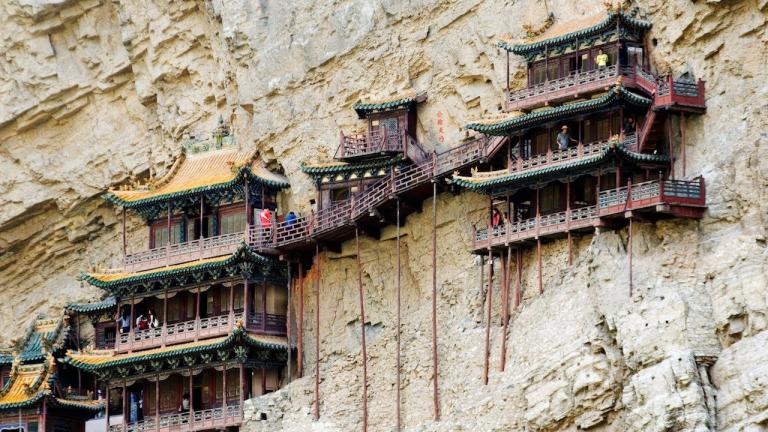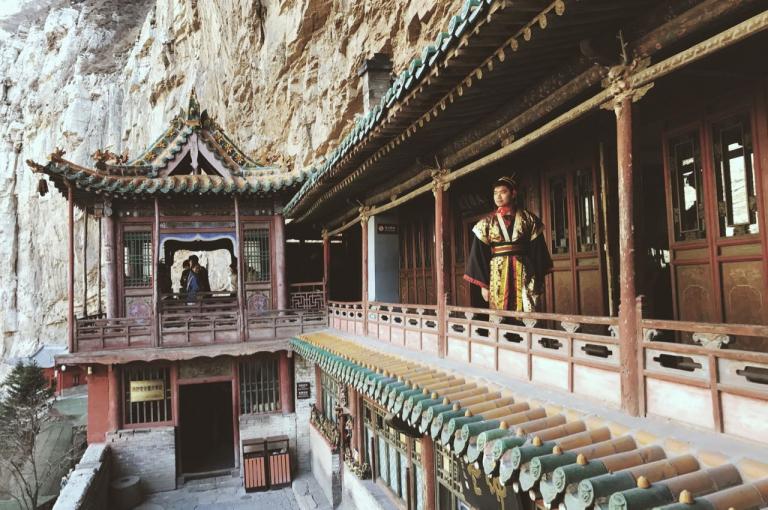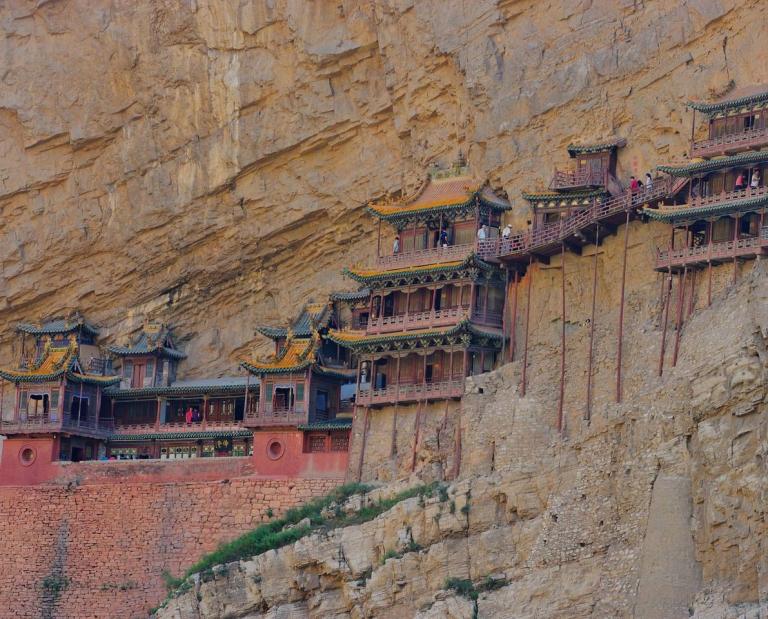West Beijing Hanging Temple
5 min readIn Yanjiatai Village, there is a must—see site offering cool refreshments and a meldingof Buddhist and Taoist cultures. This is Holy Spring Temple in Zhang Xian Cave, alsoknown as the West Beijing Hanging Temple.From Yanjiatai Village to the mouth ofthe East Dragon Gate Valley, turning right toa mountain slope and trekking uphill to a deepvalley, you will see the Hanging Temple,where the Taoist priest Zhang Xian was saidto try to formulate pills of immortality.About one kilometer from YanjiataiVillage, enveloped by a dense ancient cypressforest, the temple area is cooler.

Travelinguphill along a flight of stone stairs, after some100 steps one will see a wooden gate coveredwith thatch grass and engraved with three characters meaning “Hanging Temple.” The mountain gate is set off by the surrounding ’peaks and trees, and a line of the azure sky Ancient path ,6appears as the boundary between the immortal realm and the secular world.Upon entering the mountain valley, one will feel refreshed by the touch of the breeze.
Traveling along the meandering stone path, lined by exuberant age-old cypresses, a chorusof birds and insects is heard Wild rabbits hidden in the shrubs by the path might leap at theoccasional passage of travelers, and the little squirrels resting on the tree branches tend towave their flossy tails to demonstrate their dominant position in this world of tranquility.Continuing the tour, one will see the steep cliffs overhead, and on the ridge flyingprayer banners inspire piety. Far in the distance are mountain peaks enshrouded by scuddingclouds and rising mists, presenting a view typical to a holy place for studying religiousdoctrines and cultivate morality.After traveling for about another 10 minutes, one will reach a flight of steps nearly 70degrees in gradient. The steps are paved with local mountain rocks, and have been polishedby centuries of foot falls. Varying in size and shape, the stone steps finally end at a mountaincave. The cave is narrow and low, capable of accommodating only one person, and in some places visitors must crawl to pass.
At the top of the mountain is a spring, clear and pure andnever dry, even during the drought season. This is the well-known “Holy Spring,” whichwas said to be effective in treating many diseases.Crossing the spring, one will reach a cliff, which at one point concaves to form aspace like an open house. The Goddess Temple stands here. The temple enshrines the CelestialGoddess, flanked by Child-Bestowing Goddess and Eyesight Goddess. On the right side ofGoddess Temple is a smaller temple, enshrining Dragon King and Jellyfish Queen, and onits right side is another smaller temple, enshrining Immortal Zhang Xiani In front of thesethree temples is a fencing wall, only one meter high, beneath which is a steep cliff. Viewedfrom afar, the temples seem to be suspended in air.In the rear is an even larger stone cave, its size equivalent to four average rooms.Formed here within this mountain terrain, enshrining a statue of Maitreya, behind a red—lacquered wood gate is the Cave of Buddha Maitreya.Just within these small temples, images of both Taoist immortals and Buddhist figurescan be found, testifying to a harmonious integration of Taoism and Buddhism.

Behind thiscombing of faiths and cultures are interesting tales. ’Legend has it that Zhang Xian was dedicated to cultivating himself by following hismaster, but the master had evil intentions and made all tasks difficult for the disciple. Whenthe food was gone, the master decided to go traveling, but he told Zhang Xian to remain inthe cave. Zhang Xian asked, “Master, here is no food, not even water and firewood. But youdo not allow me out. What should I do?” The master replied coldly, “You can eat stone andearth, and if there is no firewood, you can inflame your legs.” Then he left.Zhang Xian, very honest and tolerant, followed his master’s instruction while devoutlycultivate himself according to the religious doctrines. Several days later, with not a singledrop of water taken, Zhang finally fell in faint. While in a coma, he saw several immortalscoming near. Those were Celestial Goddess, Dragon King, Buddha Maitreya, and VedaBodhisattva. Celestial Goddess said, “Auspicious people will be blessed. You can use thesands in the cave to cook.” Dragon King told him, “Dig inside the cave, and water willcome out.” Veda Bodhisattva said, “I’ll give you a pill of immortality, and take it.” BuddhaMaitreya said with smiles, “If your master still causes you trouble. call my name threetimes, and I‘ll come to save you.” Then the immortals left. When Zhang Xian woke, hefound a pill in his hand, realizing that the dream was real.
So, he swallowed the pill, pickedsand as rice, dug earth to draw water, and even used his legs as firewood for cooking. Threeyears passed, but food and water in the cave never depleted.When the master returned, he was astonished to find that Zhang Xian, rather thanbeing a withered skeleton, looked to be in extraordinarily good health. He then asked howthis could be. Zhang Xian revealed all, but the master did not believe him. He grabbed thesand, but the sand was still sand. When Zhang Xian grabbed the sand, it became goldengrain. They tried in other aspects. but the results were the same. The master became morejealous and decided to kill Zhang Xian at first opportunity. Two days later the master told Zhang Xian, “I can also turn sand into grain.” The kindZhang Xian accepted this as true and followed his master to a large open ground, besidewhich was a deep valley. Suddenly, the master pushed Zhang Xian off the cliff.
Zhang Xianimmediately shouted three times “Buddha Maitreya! Buddha Maitreya! Buddha Maitreya!”To the master’s astonishment, there suddenly appeared a lotus seat ringed with roses togently carry Zhang Xian to beyond the mountain summit. The master, of course, receivedproper retribution for his sins.In 1995, during a renovation of Zhang Xian Lane, a bluestone stele, engraved with“Holy Spring Temple in Zhang Xian Cave,” was discovered, and the left inscription on thestele read “Year 1621.”









